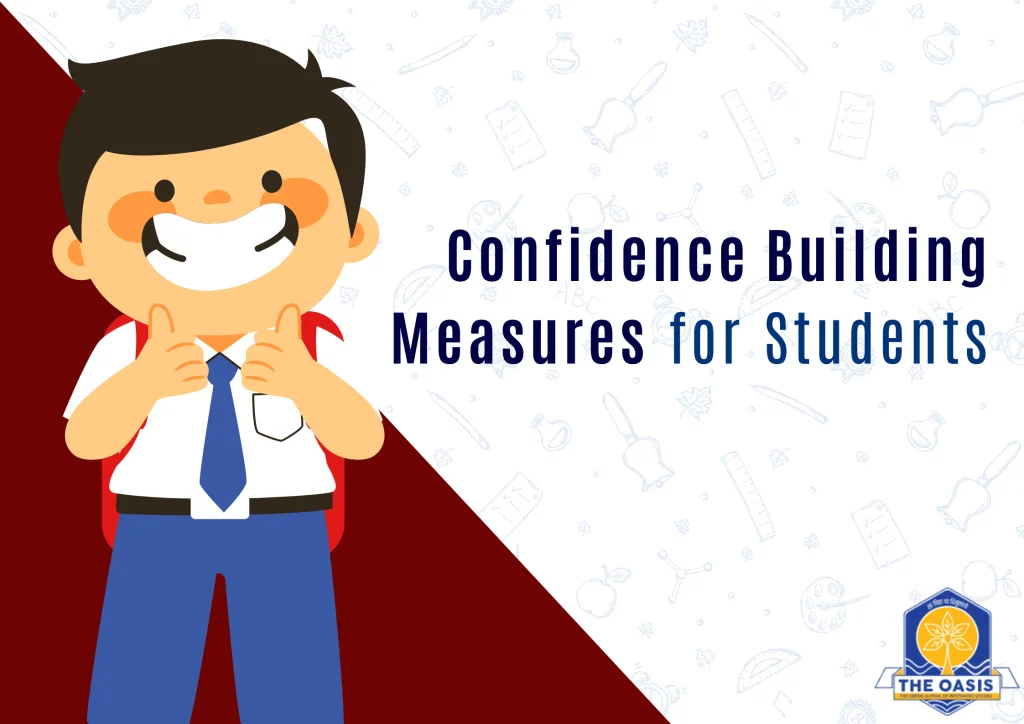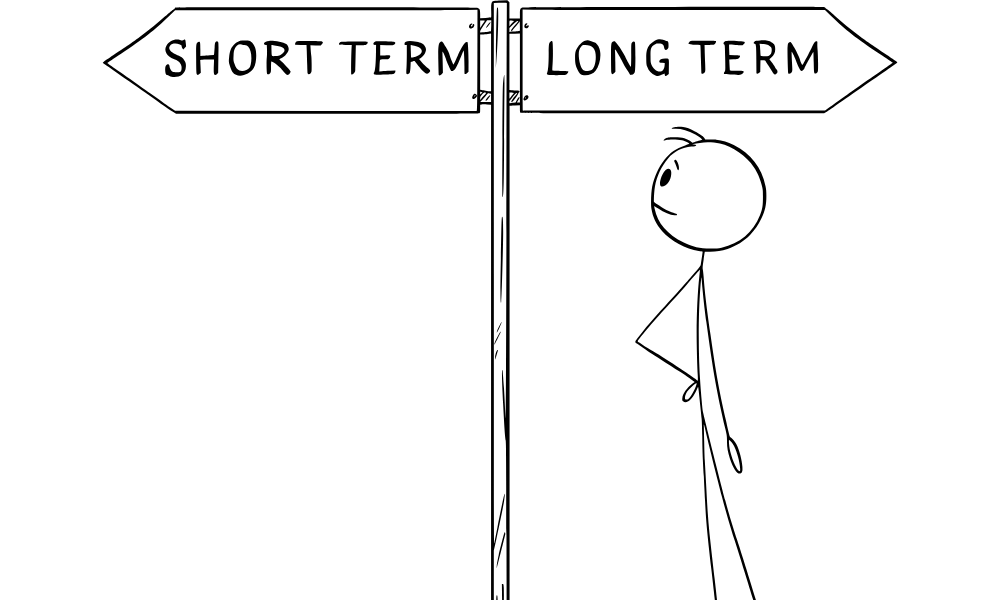 In the ever-evolving world of academics, one essential element that often determines a student’s success is confidence. A confident student can speak their mind, express their thoughts freely, and actively participate in learning without the fear of being judged. Confidence doesn’t develop overnight.
It needs to be nurtured through consistent encouragement, support, and well-designed strategies both at school and at home. This is where confidence building measures come into play, offering students a framework for personal growth and self-belief.
In Boys Boarding Schools in India, where children live and learn in a residential environment away from home, the need for confidence-building becomes even more crucial.
These schools create a structured setting that fosters independence, discipline, and character development all of which directly contribute to self-confidence. When students feel good about who they are and what they can achieve, they are more likely to pursue academic and personal goals with enthusiasm and resilience.
In the ever-evolving world of academics, one essential element that often determines a student’s success is confidence. A confident student can speak their mind, express their thoughts freely, and actively participate in learning without the fear of being judged. Confidence doesn’t develop overnight.
It needs to be nurtured through consistent encouragement, support, and well-designed strategies both at school and at home. This is where confidence building measures come into play, offering students a framework for personal growth and self-belief.
In Boys Boarding Schools in India, where children live and learn in a residential environment away from home, the need for confidence-building becomes even more crucial.
These schools create a structured setting that fosters independence, discipline, and character development all of which directly contribute to self-confidence. When students feel good about who they are and what they can achieve, they are more likely to pursue academic and personal goals with enthusiasm and resilience.
Understanding Confidence in Students
 Confidence in students refers to their belief in their ability to succeed, make decisions, and handle challenges. It empowers them to try new things, voice their opinions, and step out of their comfort zones.
However, many students struggle with self-doubt, especially in competitive or judgment-heavy environments. This is where strategic confidence building measures can make a transformative impact.
Confidence in students refers to their belief in their ability to succeed, make decisions, and handle challenges. It empowers them to try new things, voice their opinions, and step out of their comfort zones.
However, many students struggle with self-doubt, especially in competitive or judgment-heavy environments. This is where strategic confidence building measures can make a transformative impact.
Key Confidence Building Measures for Students

Positive Reinforcement
Acknowledge achievements, big or small. Celebrating progress helps students associate learning with positive emotions.
Encouraging Public Speaking
Debates, speeches, and classroom presentations are excellent tools to help students overcome stage fright and articulate their thoughts.
Skill-Based Learning
Introducing practical, hands-on learning experiences in art, music, sports, or science labs allows students to discover their unique strengths.
Peer Interaction and Group Activities
Collaborative tasks and team projects build communication, negotiation, and leadership skills—key components of confidence.
Mistake Acceptance Culture
Teach students that making mistakes is part of the learning journey. Create a classroom environment where students feel safe to try and fail.
Goal Setting and Achievement Tracking
When students set achievable goals and see their progress, it gives them a sense of control and boosts their confidence.
Teacher-Student Connection
A nurturing relationship with teachers gives students the emotional support they need to believe in themselves.
Promoting Independence
Give students responsibilities like managing classroom duties, organizing events, or mentoring juniors to instill a sense of ownership and accountability.
Participation in Extracurricular Activities
Drama, sports, art, music, and other activities offer students platforms to shine beyond academics, enhancing their self-esteem.
Regular Feedback and Constructive Criticism
Feedback should not only highlight areas of improvement but also reinforce what a student is doing well.
Confidence Building at Home
 While schools implement structured programs, parents play a pivotal role in confidence building. Creating a supportive environment at home complements the efforts taken by educators.
While schools implement structured programs, parents play a pivotal role in confidence building. Creating a supportive environment at home complements the efforts taken by educators.
- Encourage open communication. Listen actively to your child’s thoughts and concerns.
- Avoid comparison with peers or siblings.
- Support your child’s interests, whether it’s music, writing, coding, or sports.
- Model confident behavior. Children often imitate the attitudes and expressions of their parents.
Role of Teachers in Confidence Building
 Teachers act as mentors, role models, and motivators. Their words and actions can leave a lasting impact on a student’s self-image. A confident teacher who maintains positive body language, speaks with assurance, and acknowledges student effort can influence the class to mirror the same behavior.
Ways teachers can help:
Teachers act as mentors, role models, and motivators. Their words and actions can leave a lasting impact on a student’s self-image. A confident teacher who maintains positive body language, speaks with assurance, and acknowledges student effort can influence the class to mirror the same behavior.
Ways teachers can help:
- Use students’ names while addressing them.
- Encourage questions and healthy debates.
- Use inclusive language and ensure every student gets a chance to participate.
- Share stories of famous personalities who overcame failures.
The Long-Term Impact of Confidence Building
 Students who undergo consistent confidence building measures tend to grow into more independent, decisive, and emotionally resilient individuals. They are better equipped to face academic pressure, handle failures, and interact in social settings. More importantly, confident students often grow into responsible adults with strong leadership potential.
Confidence also positively impacts:
Students who undergo consistent confidence building measures tend to grow into more independent, decisive, and emotionally resilient individuals. They are better equipped to face academic pressure, handle failures, and interact in social settings. More importantly, confident students often grow into responsible adults with strong leadership potential.
Confidence also positively impacts:
- Academic performance
- Mental well-being
- Social relationships
- Career readiness
Integrating Confidence Building into School Culture
For long-term success, confidence building should be a part of the school’s ethos. From curriculum design to school policies, everything should promote inclusiveness, respect, and emotional safety.
Schools can organize regular life skill workshops, motivational talks, student-led assemblies, and talent showcases that give students opportunities to express themselves freely.
By integrating these measures into daily school life, educators and parents together can create an environment where confidence is cultivated naturally, preparing students for a fulfilling academic and personal journey.
Frequently Asked Questions (FAQs)
Ques 1. Why is confidence important for students?
Ans. Confidence allows students to express themselves, participate actively in class, handle academic challenges, and develop strong interpersonal skills.
Ques 2. What kind of activities build confidence in students?
Ans. Activities like debates, group projects, sports, art, and leadership roles help build self-esteem and a sense of achievement in students.
Ques 3. What is the long-term benefit of confidence building in school?
Ans. Long-term benefits include better career readiness, emotional health, leadership skills, and a greater sense of self-worth.
Ques 4. Can confidence help reduce exam stress?
Ans. Yes, confident students tend to handle pressure better, maintain focus during exams, and view challenges positively.
Ques 5. Can confidence help reduce exam stress?
Ans. Yes, confident students tend to handle pressure better, maintain focus during exams, and view challenges positively.
 In the ever-evolving world of academics, one essential element that often determines a student’s success is confidence. A confident student can speak their mind, express their thoughts freely, and actively participate in learning without the fear of being judged. Confidence doesn’t develop overnight.
It needs to be nurtured through consistent encouragement, support, and well-designed strategies both at school and at home. This is where confidence building measures come into play, offering students a framework for personal growth and self-belief.
In Boys Boarding Schools in India, where children live and learn in a residential environment away from home, the need for confidence-building becomes even more crucial.
These schools create a structured setting that fosters independence, discipline, and character development all of which directly contribute to self-confidence. When students feel good about who they are and what they can achieve, they are more likely to pursue academic and personal goals with enthusiasm and resilience.
In the ever-evolving world of academics, one essential element that often determines a student’s success is confidence. A confident student can speak their mind, express their thoughts freely, and actively participate in learning without the fear of being judged. Confidence doesn’t develop overnight.
It needs to be nurtured through consistent encouragement, support, and well-designed strategies both at school and at home. This is where confidence building measures come into play, offering students a framework for personal growth and self-belief.
In Boys Boarding Schools in India, where children live and learn in a residential environment away from home, the need for confidence-building becomes even more crucial.
These schools create a structured setting that fosters independence, discipline, and character development all of which directly contribute to self-confidence. When students feel good about who they are and what they can achieve, they are more likely to pursue academic and personal goals with enthusiasm and resilience.
 Confidence in students refers to their belief in their ability to succeed, make decisions, and handle challenges. It empowers them to try new things, voice their opinions, and step out of their comfort zones.
However, many students struggle with self-doubt, especially in competitive or judgment-heavy environments. This is where strategic confidence building measures can make a transformative impact.
Confidence in students refers to their belief in their ability to succeed, make decisions, and handle challenges. It empowers them to try new things, voice their opinions, and step out of their comfort zones.
However, many students struggle with self-doubt, especially in competitive or judgment-heavy environments. This is where strategic confidence building measures can make a transformative impact.

 While schools implement structured programs, parents play a pivotal role in confidence building. Creating a supportive environment at home complements the efforts taken by educators.
While schools implement structured programs, parents play a pivotal role in confidence building. Creating a supportive environment at home complements the efforts taken by educators.
 Teachers act as mentors, role models, and motivators. Their words and actions can leave a lasting impact on a student’s self-image. A confident teacher who maintains positive body language, speaks with assurance, and acknowledges student effort can influence the class to mirror the same behavior.
Ways teachers can help:
Teachers act as mentors, role models, and motivators. Their words and actions can leave a lasting impact on a student’s self-image. A confident teacher who maintains positive body language, speaks with assurance, and acknowledges student effort can influence the class to mirror the same behavior.
Ways teachers can help:
 Students who undergo consistent confidence building measures tend to grow into more independent, decisive, and emotionally resilient individuals. They are better equipped to face academic pressure, handle failures, and interact in social settings. More importantly, confident students often grow into responsible adults with strong leadership potential.
Confidence also positively impacts:
Students who undergo consistent confidence building measures tend to grow into more independent, decisive, and emotionally resilient individuals. They are better equipped to face academic pressure, handle failures, and interact in social settings. More importantly, confident students often grow into responsible adults with strong leadership potential.
Confidence also positively impacts:



